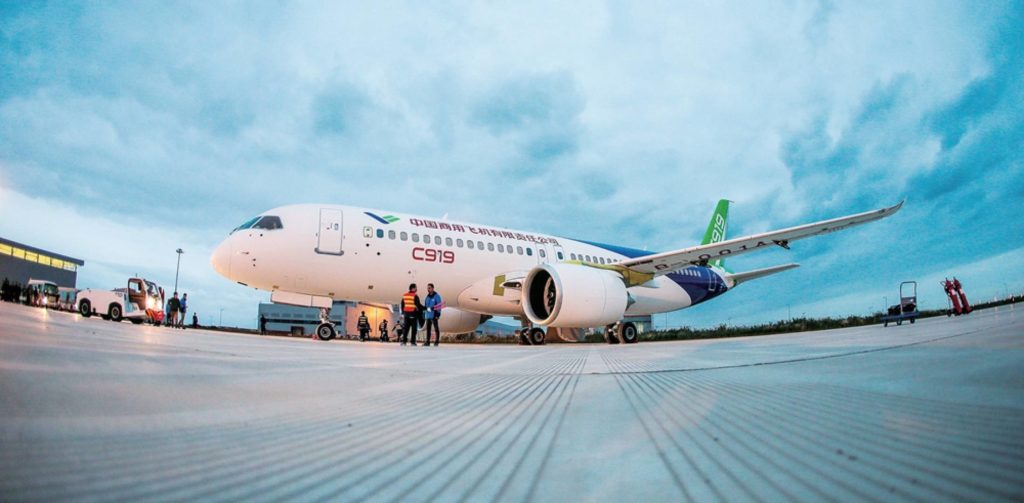12 Feb 2018
China Aviation Industry Newsletter 12 February
CAAC Inks New, Updated Civil Aviation Agreements
The Civil Aviation Authority of Singapore (CAAS) announced signing several agreements at and in conjunction with the Singapore Airshow, underscoring the nation’s commitment to modernizing and improving global civil aviation operations. Perhaps most importantly, Singapore and the United States signed a revised Bilateral Aviation Safety Agreement–Implementation Procedures for Airworthiness (BASA-IPA), deepening the long-standing cooperation between the U.S. Department of Transportation’s Federal Aviation Administration (FAA) and the CAAS.
China Accelerates Development of GA Airports
China’s general aviation (GA) industry has huge potential for future development, although it is constrained by limited economic scale, operational restrictions, and some competition factors. While it has grown relatively rapidly, China’s GA sector has a tiny fleet of aircraft, about 2,800, consisting of 66 percent fixed-wing, 32 percent rotorcraft, and 2 percent airships and hot-air balloons. The number of GA aircraft is expected to reach 5,000, with annual flight hours surpassing 2 million. The number of GA airports will exceed 500 by 2020, with 578 new GA airports to be built under the provincial and enterprise planning process during 2017-2020, with an investment of more than ¥140 billion ($21.5 billion).
China's aviation watchdog expects record 65 million trips in this year's holiday rush
A record 65 million trips are expected to be made by air across China during the Spring Festival travel rush, up by 10 per cent on last year, the civil aviation watchdog said. "The demand is great," said Liu Feng, director of the Department of Transport from the Civil Aviation Administration of China, adding that growth has remained steady.
China contributes 549 million passengers to global aviation industry in 2017
China had more than 549 million air passengers in 2017, a significant contribution to the world aviation industry, which hit a new record of 4.1 billion passengers last year. The international civil aviation industry saw a 7.1% year-on-year increase in the number of passengers carried on scheduled services in 2017, the International Civil Aviation Organization (ICAO) said.
Comac Draws Parallel with China’s Trade Initiatives
The Commercial Aircraft Corporation of China (Comac) plans to market its portfolio of twin-engine commercial aircraft in line with Beijing’s two major trade strategies—the 21st Century Maritime Silk Road and the One Belt One Road initiatives. Comac is responsible for developing the C919 narrowbody airliner and more recently, the widebody CR929, a joint project between China and Russia.
China’s Liberalized Access Policy Bearing Fruit
China’s liberal policy of opening its secondary international airports to foreign carriers continues to attract more entrants, particularly from Asia. With Air China, China Southern Airlines, and China Eastern Airlines using their rights for long-haul services from the major airports, the battleground among foreign carriers has shifted to second-tier cities. Under Civil Aviation Administration of China (CAAC) regulations, each of the three major domestic airlines may operate only one flight to those secondary destinations in the interest of discouraging competition on the same route among local carriers.
First C919 jet expected to be delivered in 2021
The Commercial Aircraft Corporation of China (COMAC), maker of China's first domestically developed large passenger plane, is aiming to deliver its first C919 single-aisle jet to customers in 2021, the company's sales manager said at an airshow ongoing in Singapore.Lu Zheng, COMAC's deputy general manager of sales and marketing, told reporters that COMAC is working on gaining Chinese airworthiness certification for the C919 in three to four years, with U.S. and European certifications to follow.
HondaJet Sees Huge Potential in China
HondaJet, the business aircraft developed by Honda Motor Co., sees big prospects in China and Southeast Asia as wealthy individuals seek out the lightweight plane as an efficiency tool. The number of high net worth individuals in China is almost the same as in the U.S., only about 2.5% of those in China are using their own business jets, compared with about 18% for some western countries like the US said Honda Aircraft CEO Michimasa in an Bloomberg interview.
Piper Trainers Headed to China in Record-breaking Deal
Piper Aircraft Company announced at the Singapore Airshow 2018 a firm order from its exclusive China dealer, Fanmei Aviation Technologies (FAT), for 152 aircraft, representing the largest individual trainer order in the manufacturer’s history. The order comprises 100 Archer TX single-engine trainers, 50 twin-engine Seminoles, one twin-engine Seneca and one single-engine Piper M350. Deliveries, beginning in March, will be made over the next seven years.
Singapore-China aviation market rapid growth as Chinese visitor numbers surge
The Singapore-China market has grown rapidly over the past 3 years, driven by inbound tourism growth. Chinese visitor numbers to Singapore have nearly doubled since 2014, prompting several airlines to increase capacity in the Singapore-China market. Singapore-China passenger traffic increased by 15% in 2016 and 12% in 2017.
Acumen Aviation © 12 February All Rights Reserved.









